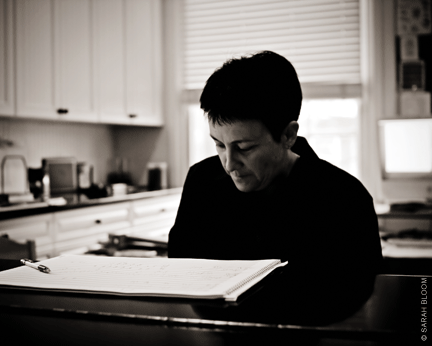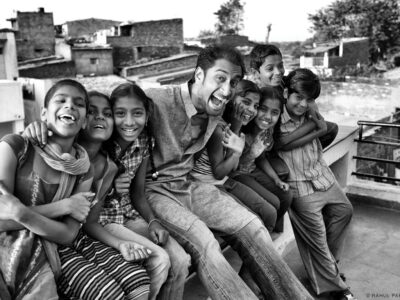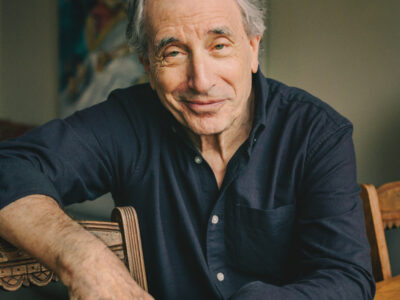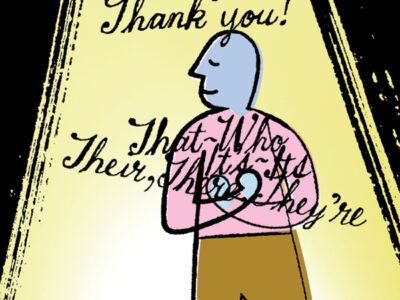
To say that composer Jennifer Higdon G’92 Gr’94 has had a good year would be a serious understatement. Last January she won a Grammy for her Percussion Concerto [“Arts,” Mar|Apr 2010]. Three months later she was awarded the Pulitzer Prize in music for her Violin Concerto, which was premiered in February 2010 and released on CD by Deutsche Grammophon in September. By October, that album, Hilary Hahn Plays Higdon & Tchaikovsky Violin Concertos (see review below) was the bestselling classical CD on the US market.
Higdon released other CDs last year as well, including The Singing Rooms with Jennifer Koh and the Atlanta Symphony (Robert Spano conducting), and her Oboe Concerto on the Equilibrium label with soloist Nancy Ambrose King. She recently spoke with frequent Gazette contributor Karen Rile C’80.
The Violin Concerto was commissioned by the Indianapolis, Baltimore, and Toronto orchestras and the Curtis Institute. So why was it recorded by the Royal Liverpool Philharmonic?
Hilary picked them. [Vasily] Petrenko is the principal conductor in Liverpool, and an up-and-coming guest conductor in his own right. He’ll be conducting the Philadelphia Orchestra later this season. The concerto was premiered by the Indianapolis Symphony, and I wrote those concertmaster solos with [Time For Three violinist] Zach DePue in mind. But US union rules make it too costly to do studio recordings, which is what Hilary wanted to do. So she decided to engage a European orchestra. It all happened very fast—the premiere in February [2009], the recording in May, and the Pulitzer announcement in April [2010].
And within a week of its pre-release, it was the bestselling CD on the US classical market.
It’s important to get the recording out there. These days, audiences expect to be able to buy a CD while they’re at the performance, like at rock concerts.
You were such a big Beatles fan, growing up. It must have felt surreal to be in Liverpool, of all places, in the midst of this excitement.
I went to the Beatles Museum in Liverpool on my days off. I listened to a lot of Beatles around the time of the Pulitzer announcement, to keep me grounded. It was such a sound world from my childhood that it kept a familiar element around me during a time of Pulitzer intensity.
So what’s it like to win a Pulitzer?
Well, you know, the Pulitzer committee doesn’t inform you when you’re nominated, or the day that you win. All anyone knows is that an announcement will be made at 3 p.m. on a given day—it’s released on their website. So the way you find out is the press descends on you. I was at my doctor’s office getting a tetanus booster. At 3:15 I came out of the office and turned my cell phone on—and the avalanche hit. All those calls from reporters asking me for statements, and at the time I didn’t even know which of my concertos had won. There were two that year—the piano concerto I wrote for the National Symphony, which was premiered by Yuja Wang in December 2009, and Hilary’s Violin Concerto, from back in February. I sort of pieced it together while I was talking to the reporters. Then I got a letter in the mail from the Pulitzer committee a week later.
The next day, after I found out about the Pulitzer, I went down to the FedEx warehouse with [my partner] Cheryl to pick up my Grammy. They use dummies for the ceremony—the real ones get mailed out a few months later. The whole time I was in the warehouse I was thinking, “Well, this is surreal, this is a dream.” I got a headache from all the adrenalin, so on the way home, with my Grammy, I stopped by the Walgreens in my neighborhood to pick up a bottle of aspirin. While I was in line, I overheard the pharmacist asking a woman for her address to put on a prescription, and she answered, “I don’t have an address.” That brought me back to earth. This was one of the most startling lessons of my life.
But life is different now.
Other Pulitzer winners told me this award would change my life, and it has. It’s like being given the Good Housekeeping Seal of Approval. The attention is overwhelming—my commissions are booked through 2015, and I’ve had to turn so many offers down. At this point in my career, my commissions are shaping the body of my work. And I’m constantly on the road. Every week I’m off traveling somewhere—college residencies, pre-concert lectures, interviews. Our publishing company has been flooded with orders for scores, almost 400 the first week after the announcement. Strangers come up to me on the street because they’ve seen a TV interview. I even had an airline employee agree to change my ticket because she recognized my name from a radio interview.
Your music has a reputation for being very challenging for the musicians to play. Do you see this as an impediment to its popularity?
I’ve started hearing the expression “Higdon hard.” But what I find is that, if they like the music they’ll be able to play it. I have orchestras at every budget level playing my work, and I find that the small orchestras play superbly. When they care about the music, they make it happen. My Concerto for Orchestra was supposed to be unplayable. But the Mannes Conservatory Orchestra took it to Carnegie Hall, and they did a great job. And audiences respond to technical virtuosity. They love that “wall of sound.”
What about community orchestras and student performers?
I do a lot of programs with students at all different levels. For example, I just finished a residency at the University of Wyoming where student groups performed 15 of my pieces, including chamber, choral, band, and orchestra. Because of my rural background, growing up in a little town in eastern Tennessee, I can really relate to those kids. Although winning the Pulitzer may have ruined some of my street cred.
I do think it’s important for composers to write for young players. I have a piece called Rhythm Stand, which is for a middle-school-age band. You can find clips of school kids playing it on YouTube.
What do you think about the future of classical music?
Younger audiences today have different expectations about music, so it’s important for artists and orchestras to re-examine their old business models. For one thing, the pop-music market has appropriated the term new music, so kids are less intimidated than their elders when they hear that label. And then there’s the new technology. YouTube and what I call the “iPod Shuffle Phenomenon” have made young people more open to different kinds of sound. They move fluidly between genres without perceiving barriers like their parents’ generation did.
I was at a concert recently in Fort Worth, Texas, where a grandmother brought her granddaughter up to meet me. She said, “This is the first time I’ve found music that both of us like.”
SIDEBAR
Roll Over, Tchaikovsky

PLAYS HIGDON & TCHAIKOVSKY VIOLIN CONCERTOS
Royal Liverpool Philharmonic Orchestra, Vasily Petrenko, Conductor
Deutsche Grammophon, 2010. $18.98.
Throughout her recording career, violinist Hilary Hahn has made a point of pairing warhorses with lesser-known concertos: Sibelius with Schoenberg, Paganini with Sphor, Brahms with Stravinsky, and Samuel Barber with Edgar Meyer. This strategy pleases connoisseurs and gently introduces middle-of-the-road fans to more adventurous fare—although it’s a good bet the average listener spends more time with her Sibelius tracks than her Schoenberg.
But in her latest Deutsche Grammophon release, Higdon & Tchaikovsky Violin Concertos, Hahn’s former teacher and longtime friend Jennifer Higdon G’92 Gr’94 gets top billing and more buzz than the venerable Tchaikovsky. The new CD features the Royal Liverpool Philharmonic Orchestra under Vasily Petrenko, and was released this past September, just a few months after Higdon received her Pulitzer Prize for the concerto. Within a week, Higdon & Tchaikovsky was the bestselling classical album on the American market.
The combination of these two concertos on a single disk is a felicitous coincidence. The Tchaikovsky was chosen because it is the last of the repertoire giants on Hahn’s to-do list. As for the Higdon, audiences have been clamoring for a recording since before its live premiere by the Indianapolis Symphony in early 2009. Both concertos are full-blown orchestral works in a traditional three-movement form; they complement one another and present some pleasing contrasts, both musical and historical.
Higdon wrote her Violin Concerto with Hahn’s strengths in mind, but without any micro-management on the part of Hahn, who gives free reign to the composers she commissions. Like all of Higdon’s work, the writing is energetic, richly melodic, and makes use of the full orchestral palette. She designed each movement to spotlight a different aspect of Hahn’s supple, virtuosic playing. The first movement, “1726” (a sly reference to the address of the Curtis Institute), opens in a series of filmy harmonics, followed by the tinkle of a glockenspiel played with knitting needles, and then a haunting sound, produced by a mallet striking a bell placed upon a kettle drum. Out of this mist emerges the long line of the solo violin, which laces in and out among the blossoming orchestral groupings. Suddenly, we are off to the races, pressing forward towards the breathtaking cadenza, and a return to the radiant atmosphere of the opening measures. The slow movement, “Chaconni,” after the baroque chaconne, highlights Hahn’s distinctively gorgeous tone and the beauty with which she shapes her lines. “Fly Forward” is a jazzy moto perpetuo performed with spectacular speed and accuracy, inspired by Hahn’s recording of the third movement of the Barber concerto.
—Karen Rile




